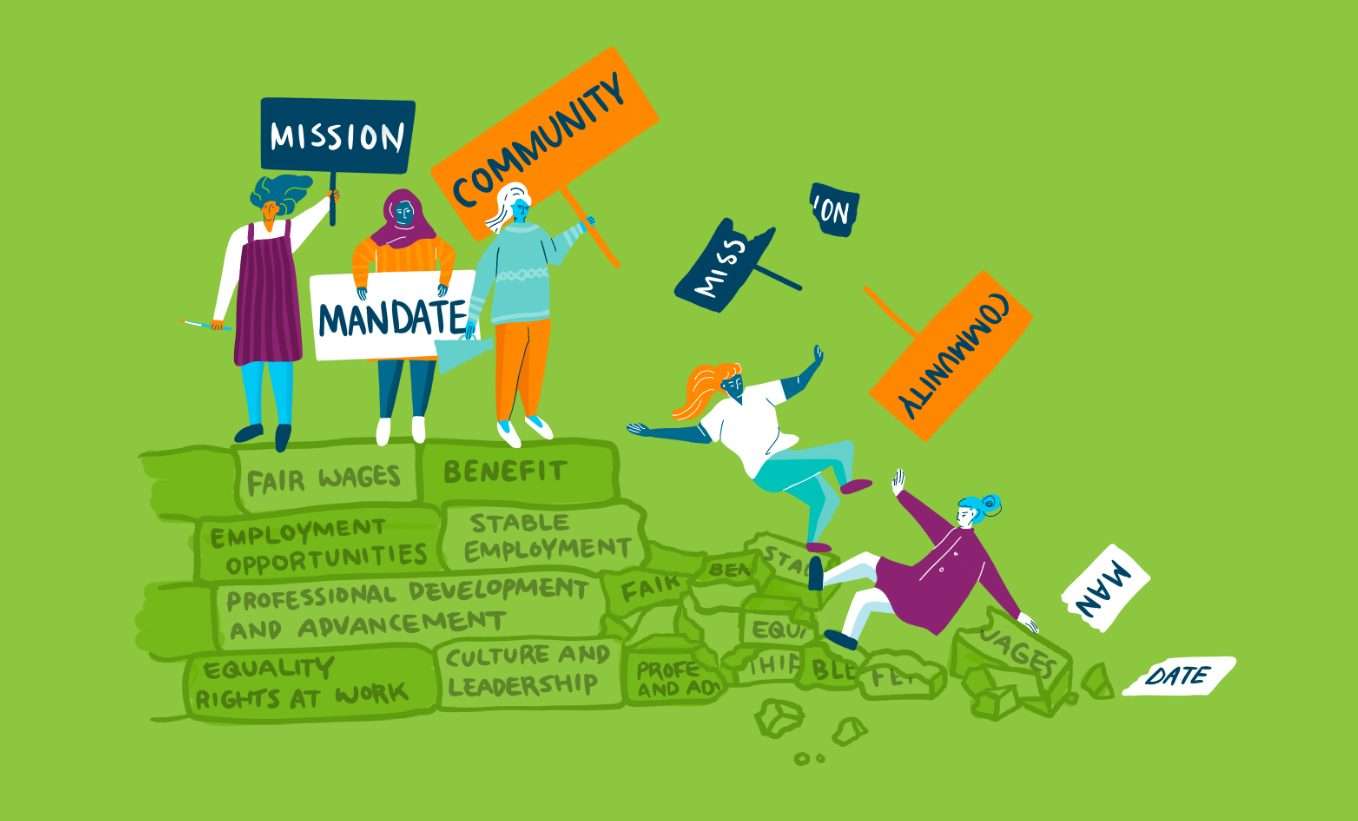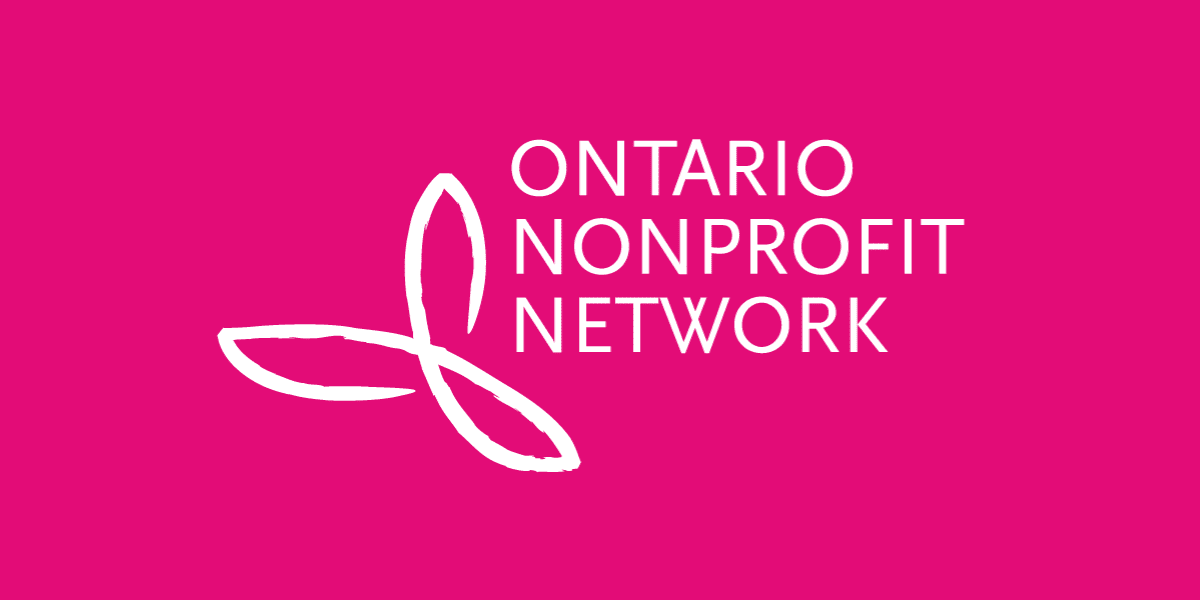Examining women’s compensation in the nonprofit sector – Part 3
Benefits – Pension Plan, Maternity Top-ups
By Pamela Uppal
This is the third in a three-part series of blogs examining women’s pay in the nonprofit sector. Part 1 and Part 2 are also available online.
Given the broader gender pay gap for women in the labour market, how does it manifest in the nonprofit sector? In short, what does women’s compensation in the nonprofit sector look like? Based on our literature review findings, in a three-part blog series we’ll explore different factors impacting women’s compensation in the sector.
Recap
We have a good sense of how women are faring in the public and private sectors as most of the literature dealing with women in the labour force focuses on women’s employment experiences in these two sectors. However, when it comes to women working in the nonprofit sector we have little to no information. Data on the sector as a whole is sparsely collected on a consistent basis, women’s employment experience in the sector is an underexplored area of research, and the sector is either forgotten or subsumed under the public sector (at times then referred to as the broader public sector). But unique distinctions that impact employment trends exist between the nonprofit and private and public sectors (e.g., higher unionization rates which result in higher pay).
Piecing together quantitative and qualitative information from a variety of sources in Ontario and Canada, our recent literature review reveals that women’s compensation in the sector is affected by three critical issues: the “care penalty”, a gender wage gap, and limited access to benefits such as a pension plan and maternity top-ups. While only two are about pay and one is benefits related, together these issues create a compensation picture where women earn less than men in the sector. The “care penalty’ impacts women’s earnings in carework positions from the outset and a lack of benefits sets women back economically during critical points in their life cycle. A gender pay gap exists across the sector for women as a group. You can read more in depth about this finding in Decent Work for Women: A literature review of women working in the nonprofit sector.
This is the third in a series of three blog posts (each focusing on one of these issues) that highlight the findings of our literature review.
Lack of access to a sector-wide pension plan and maternity top-ups
Currently, there is no sector wide pension plan for Ontario nonprofit workers as there is in Quebec, although some individual organizations have a pension plan and/or make contributions to retirement savings accounts (e.g., registered retirement savings plans, or RRSPs). According to a (not necessarily representative) survey of the Ontario nonprofit sector, only a minority of workers in the nonprofit sector have any kind of retirement plan: 39% have a (Group) RRSP, 6% have a workplace pension plan; and 51% of respondents had neither.
In Canada, alongside Employment Insurance (EI) benefits, women can also be compensated by their employers for earnings lost when on maternity and/or parental leave through a Supplemental Unemployment Benefit (SUB), commonly referred to as a top-up. A top-up provides an increase to maternity and parental leave EI benefits on top of the regular 55%. According to the Employment Insurance Coverage Survey (EICS) as analyzed by Katherine Marshall in Employer Top-ups, in 2008 48% of public sector mothers and 8% of private sector (including the nonprofit sector) mothers received a top-up. The 2017 Charity Village report Salary and Benefits Study found that maternity/parental benefits was one of the most desired benefits received by support staff in organizations. However, it does not describe what these benefits consisted of, whether it was flex time, maternity/parental leave or a top-up. In the 2017 national Boland Survey of Nonprofit Sector Salaries and Human Resource Practices report, family leave benefits were included in its benefits list for the first time. The survey found that half of those who responded provided a maternity or parental leave subsidy to all employees).
So, what does this mean?
In terms of retirement income security, many nonprofit workers, like other working Canadians, are on track to experience a sharp drop in their standard of living when they retire. The average worker will receive only 44% of pre-retirement earnings from public programs even after the Canada Pension Plan enhancement takes full effect (decades from now). This situation is more concerning for women workers who tend to live longer, have lower earnings, and often have gaps in their careers (and hence a reduced ability to save for retirement or contribute to a plan) compared to men.
More research is needed to determine maternity/parental leaves coverage in the sector and what it means for women workers. Access to top-ups is valuable for ensuring women are able to sustain themselves and their families while on leave and also to allow them remain on leave for a longer period. Indirectly, top-ups can also enhance long-term earnings since they may stipulate a return to employment within a specified time thereby encouraging job continuity. Moreover, top-ups make an organization an attractive workplace for women who want to have children, especially when the public and private sectors are offering top-ups. Greater access to top-ups ensures that those working in the sector are not further disadvantaged by the “motherhood” penalty on women’s wages.
Next Steps
The gender wage gap is one of three issues highlighted by our literature review. Stay tuned for our posts on the “care penalty” and the gender wage gap in the nonprofit sector.
While the literature review was able to paint an introductory picture of women’s employment experiences in the sector, particularly that of compensation, we identified major gaps in research. One critical one is the lack of information available on immigrant, Indigenous, trans, and racialized women and women with disabilities. The available data on women’s in the sector are not disaggregated by any identity marker other than gender.
Multiple intersecting questions have emerged from our literature review that require further investigation:
- How many women in the sector have access to a pension plan and which kind?
- How many women in the sector have access to a maternity top-up and for how much?
- Are there other maternity/parental benefits available for women in the sector?
- What is the transition to maternity / parental leave and back like?
The literature review is only the beginning of ONN’s Decent Work for Women Working in Ontario’s Nonprofit Sector project. ONN hopes to explore these questions in the engagement phase of the project by hearing from women working in the sector through learning circles, key informant interviews, and a sector-wide survey.
The nonprofit sector in Ontario and Canada is rich and vibrant. Its contributions are critical to the social, economic, and political fabric of communities. Given the sector’s contributions and that it is a women-majority sector, it’s time that those working in the sector collectively begin to think about how it can lead the way for gender equity in the workplace.
More information
-
- Our project, Decent Work for Women Working in Ontario’s Nonprofit Sector
- Subscribe to our project newsletter
- Literature review: Decent Work for Women: A literature review of women working in Ontario’s nonprofit sector
- Pamela Uppal, project lead,pamela@theonn.ca, 416 642 5648 x504





